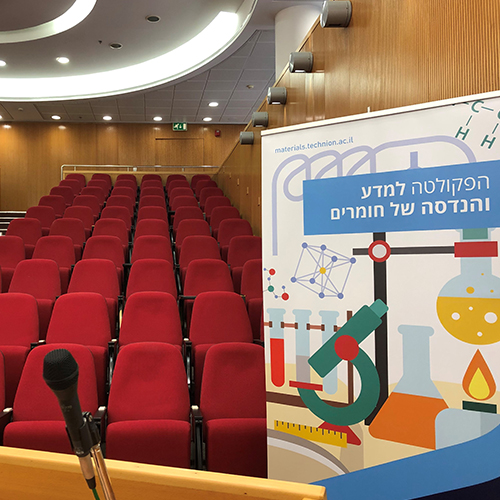
26/12/2025
אודיטוריום ע"ש דויד וואנג, בניין מידן, קומה 3
Ms. Chen Errera MSc candidate
Department of Materials Science and Engineering, Technion Israel Institute of Technology Haifa
B.Sc. in materials science and engineering (2021).
Gold nanoparticles (Au NPs) exhibit a well-known phenomenon of localized surface plasmons resonance (LSPR) when interacting with light. Plasmonic nanocavities provide a powerful solution for reducing effective mode volumes and achieving local electromagnetic field intensity enhancement in highly confined volumes. However, producing Au NPs with nanocavities by standard methods, such as solid-state dewetting, is impossible since the equilibrium crystal shapes or crystal growth shapes are convex.
Here, we aimed to achieve concave shapes of Au NPs by fabricating two-phase Au/Fe NPs followed by selective etching of Fe precipitates, and to examine the effect of these highly non-equilibrium shapes on the collective optical properties of the NPs.Unlike studies which involve dealloying in fully miscible systems, this research innovation lies in the selective etching of precipitates in the Au-Fe system with limited mutual solubility. First, the fabrication method and its parameters will be discussed. A thorough characterization of the obtained NPs will be presented, revealing the different morphologies, phases, size distribution and the topography of the studied compositions. We propose a model explaining the observed increase of the area fraction of NPs with small average diameters with increasing annealing time, which is in apparent contradiction with the coarsening phenomenon. Further, the etching procedures and optical properties will be discussed. This method provides a new approach to fabricating of Au-based NPs with concave shapes and enables a fine tuning of LSPR parameters.


